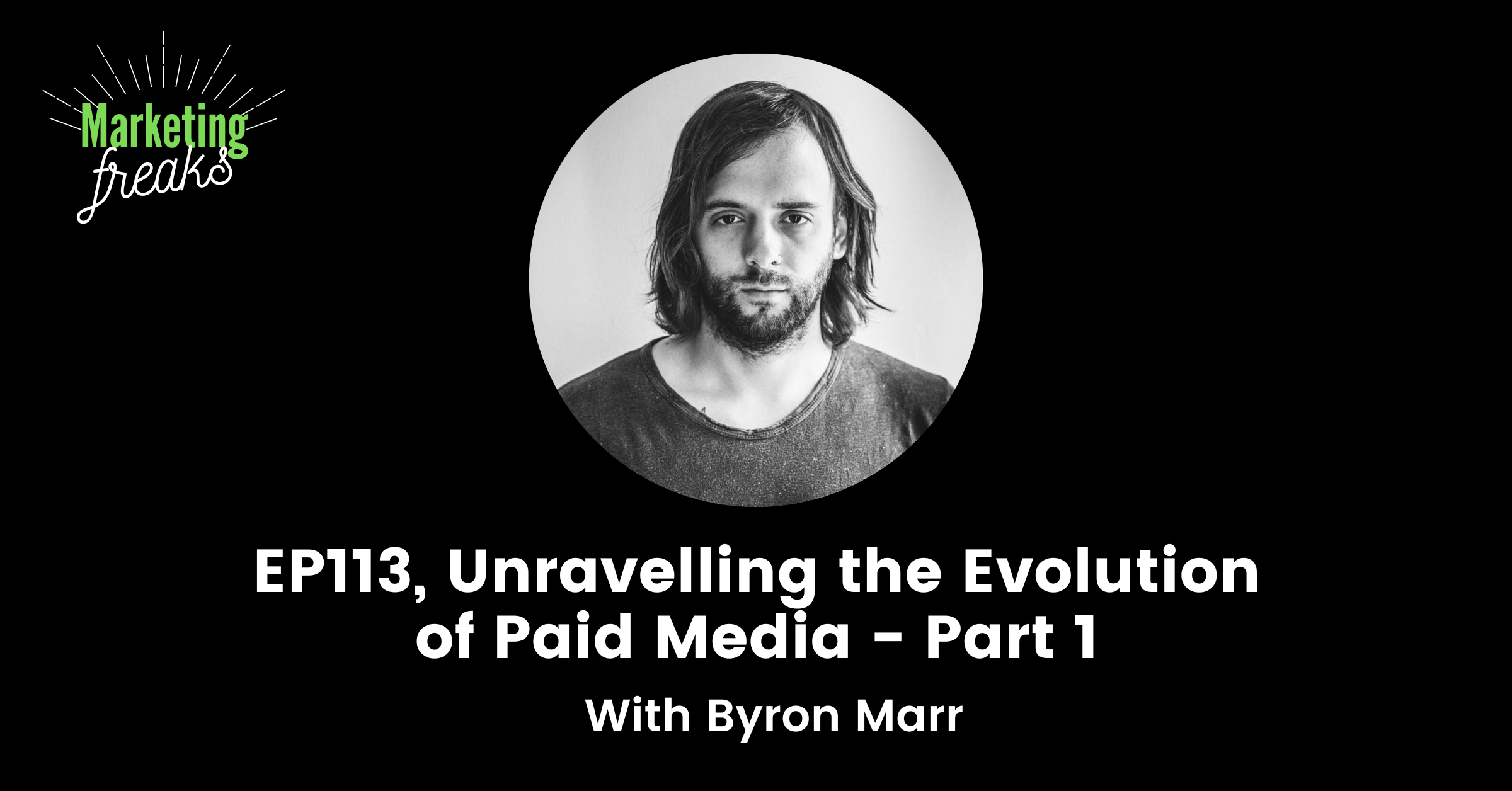Welcome back to the Marketing Freaks Podcast. In this week’s episode Jon is joined by founder of ProfitSpring, Byron Marr. Byron got into Paid Media through promoting bands on Facebook and discovered a natural affinity for data driven creativity. Having worked agency side, client side, and now running his own consultancy business, Byron has a wealth of experience.
In this two part mini series, Jon and Byron delve into the changes that have taken place in the world of Paid Media over the years, discussing both the good and the bad. They explore how the industry has evolved and what marketers need to focus on today. During part one Byron shares his thoughts on the rise of automation, the importance of data management and strategic decision-making.
Subscribe links:

The Impact of Machine Learning and Automation on Paid Media: Navigating New Challenges
It’s no secret that the rise of machine learning and automation has revolutionised the landscape of Paid Media, offering both opportunities and challenges for marketers. The fluidity between platforms allows for strategic budget allocation cross platform to achieve optimal outcomes. However, the abundance of platforms makes it challenging to align them with specific business objectives. Marketers must analyse campaign results to determine their effectiveness and decide whether to adjust, switch off, or reallocate budgets accordingly.
Machine learning has streamlined the creative and ad copy process, eliminating the need for numerous ad sets with different creatives. While this automation brings efficiency and performance benefits, it poses challenges in diagnosing and explaining campaign success or failure.
To navigate these challenges, experienced marketers who can analyse campaign performance in-depth are crucial. Applying these insights to the wider marketing strategy ensures a cohesive and effective approach to campaigns.
The impact of machine learning and automation on Paid Media is profound. Businesses must leverage experienced marketers who can interpret data and make informed decisions to drive successful marketing strategies. By harnessing the potential of machine learning while retaining strategic thinking, marketers can make the most of these advancements in the Paid Media landscape.
So if you’re questioning which platforms you should be prioritising, looking to understand how to apply learning from your campaigns into your wider marketing strategy, tune into this week’s podcast.
If you’d like to discuss your Paid Media Strategy with our team, reach out and we will be happy to help.

